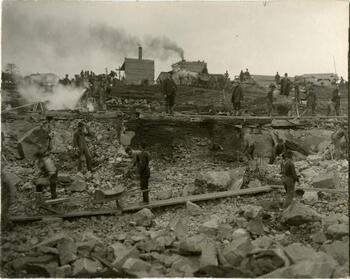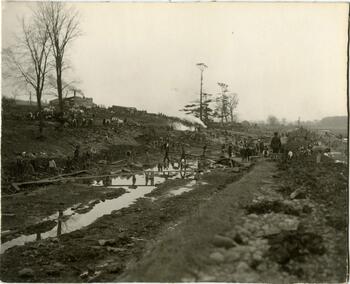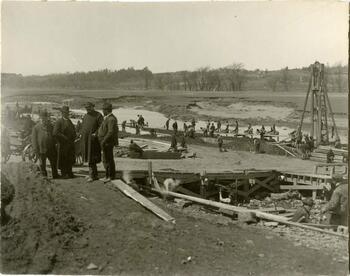The Canal Commissioners decided to contract out work on the Erie Canal in sections, each averaging about three miles. Contracting out, a somewhat new practice for the time, actually created greater popular support for the canal project because it stimulated local economies. Money was not readily available at this time, so men living near the canal route were eager to obtain contracts to bolster family incomes. In 1818-1819, when work was underway on the section of the canal between Utica and the Seneca River, two to three thousand men and as many as seven hundred horses were at work on the excavation.
Wages averaged fifty cents to a dollar a day as men were paid by the cubic yard of dirt they removed, with higher rates available for rocky terrain. With their meager wages, workers also had to account for expenses such as lodging, food, and tools.
The harsh camp life was made even worse for men working the middle section where, from Salinas to Seneca Lake, the area was basically a marshy bog that became infested with mosquitos in the summer heat. Workers were also vulnerable to injury from landslides and explosions from blasting away rock, as well as the frequent brawls that broke out at work and in the camps.
This photograph shows men working on the Erie Canal, with horses and buildings in the background, in Scotia, New York. Many canal workers initially used simple tools to accomplish tasks of digging the 363-mile ditch. Courtesy of Schenectady County Historical Society via Capital District Library Council and Empire State Digital Network.
This photograph shows construction on the Erie Canal in Scotia, New York. Disease and injury constantly impacted the immigrants and local laborers who helped construct the Erie Canal. Courtesy of Schenectady County Historical Society via Capital District Library Council and Empire State Digital Network.
This photograph shows construction on the Erie Canal in Scotia, New York. Disease and injury constantly impacted the immigrants and local laborers who helped construct the Erie Canal. Courtesy of Schenectady County Historical Society via Capital District Library Council and Empire State Digital Network.


